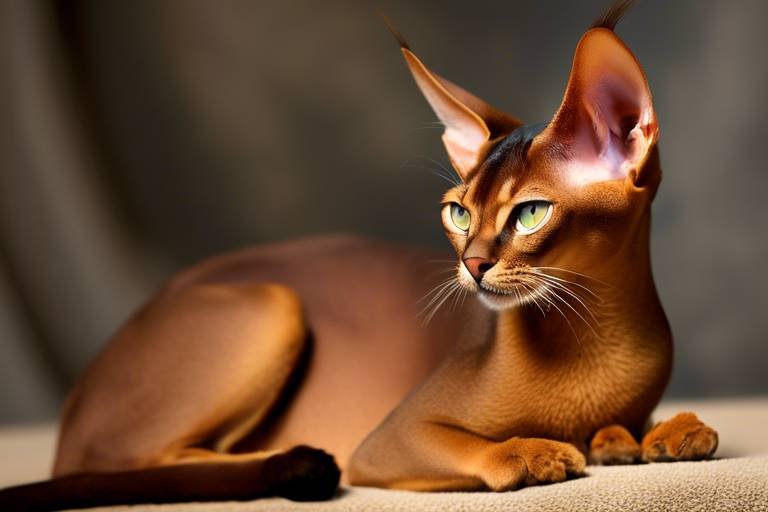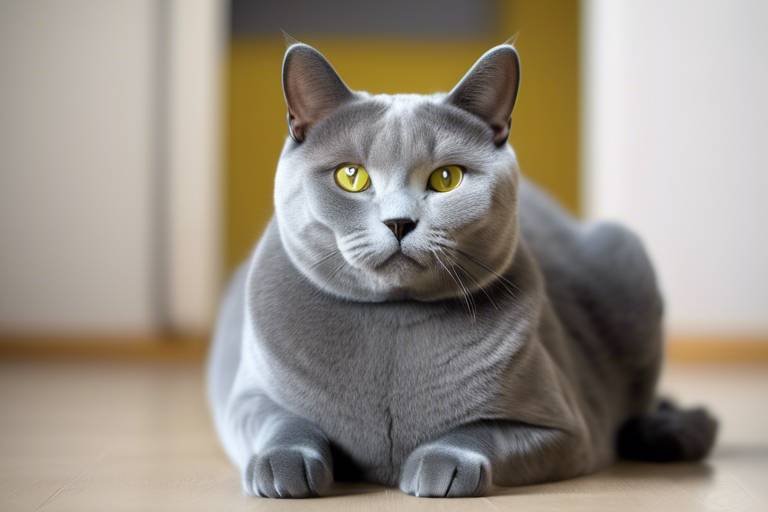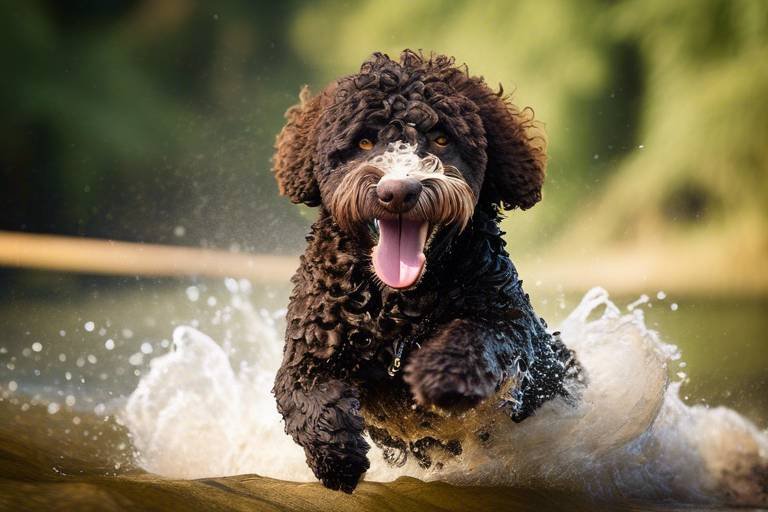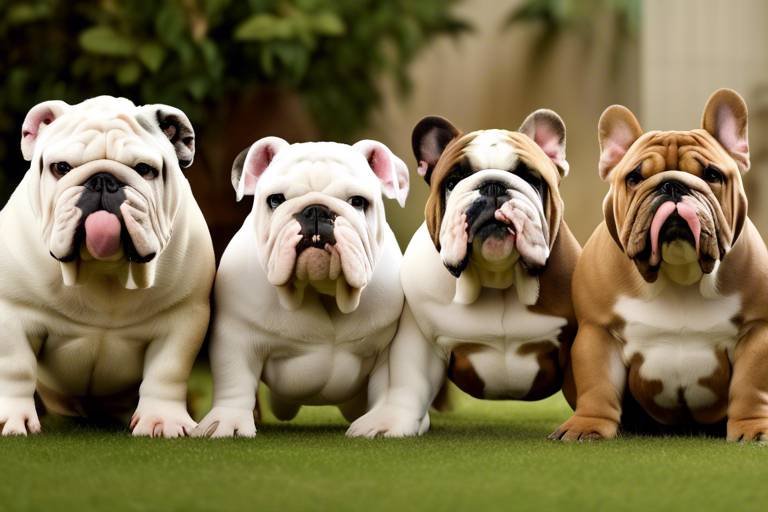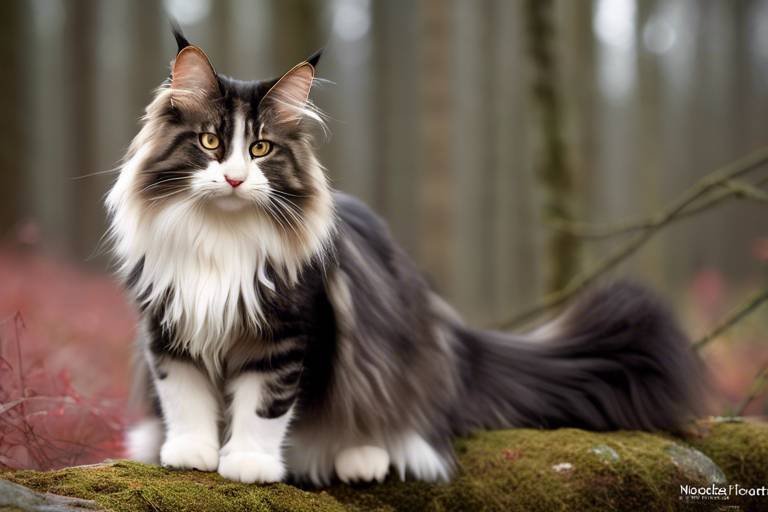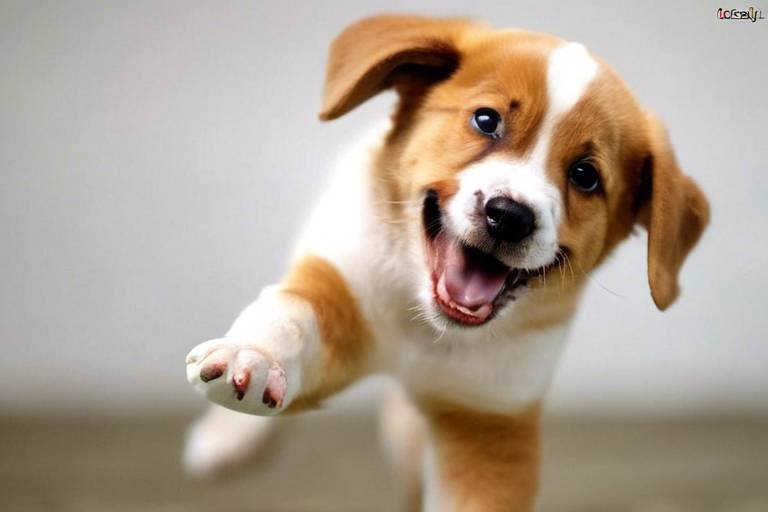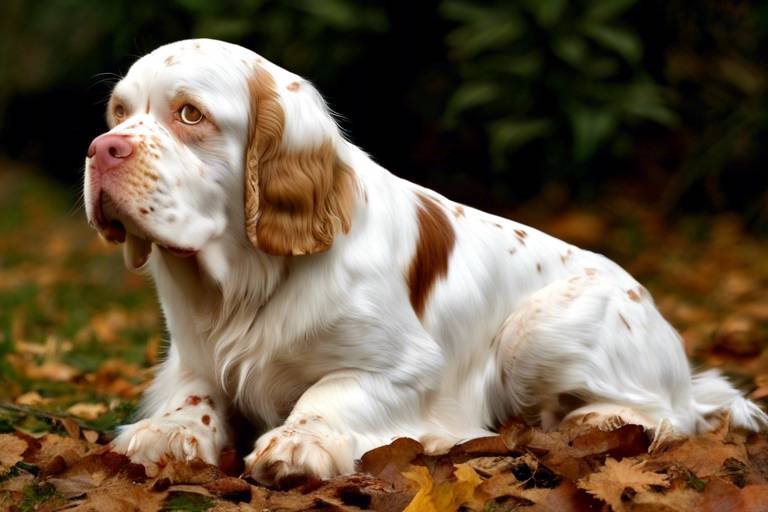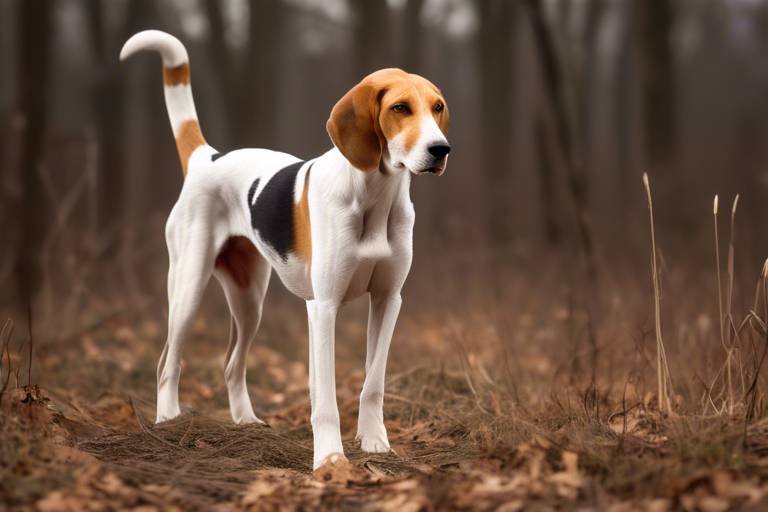The Unique Features of the Otterhound
The Otterhound is not just another dog breed; it’s a remarkable combination of history, physical prowess, and a personality that can light up any room! If you’ve ever laid eyes on this magnificent creature, you’ll know there’s something special about it. With roots tracing back to the 12th century in England, the Otterhound was originally bred for one purpose: hunting otters. Imagine a time when these dogs were the heroes of the waterways, their keen noses and powerful builds making them the ultimate companions for hunters. Today, they are cherished not only for their hunting abilities but also for their affectionate and loyal nature.
What makes the Otterhound stand out among other breeds? For starters, their size is impressive. These dogs typically weigh between 65 to 115 pounds, which gives them a robust and sturdy appearance. But it’s not just about size; it’s also about their unique physical traits that enhance their functionality. Their water-resistant coat, which is often a mix of colors like black, tan, and grizzle, not only adds to their charm but also serves a practical purpose. This coat protects them from the elements when they are out in the water, ensuring they remain warm and dry while on the hunt.
But wait, there's more! One of the most fascinating features of the Otterhound is their webbed feet. Yes, you heard that right! These webbed wonders are specifically designed to help them swim with ease. Think of them as nature's own little flippers, allowing these dogs to glide effortlessly through the water as they pursue their quarry. This trait is not just a quirky characteristic; it’s a vital aspect of their hunting capabilities, enabling them to navigate rivers and lakes like pros.
Beyond their physical attributes, the Otterhound's temperament is another reason why they are beloved by many. Known for their friendly and social nature, these dogs thrive on companionship. They are not just hunting partners; they are family members who enjoy being involved in all aspects of life. Whether it’s playing fetch in the backyard or curling up on the couch for a movie night, Otterhounds are always ready to join in the fun. Their gentle disposition makes them excellent with children and other pets, which is a huge plus for families looking for a loyal and loving dog.
In summary, the Otterhound is a breed that encapsulates the best of both worlds: a rich history as a skilled hunting dog and a warm, friendly demeanor that makes them perfect for family life. With their unique physical traits, such as their size, water-resistant coat, and webbed feet, they are truly one of a kind. If you’re considering adding an Otterhound to your family, prepare for a delightful journey filled with love, adventure, and a touch of the wild!
- Are Otterhounds good family pets? Yes, Otterhounds are known for their friendly nature and can be excellent companions for families.
- How much exercise do Otterhounds need? Otterhounds are energetic dogs that require regular exercise, including walks, playtime, and swimming.
- Do Otterhounds shed a lot? Their unique coat does require grooming, but they are not known to shed excessively.
- Are Otterhounds easy to train? They can be independent, so training may require patience and consistency, but they are intelligent and eager to please.
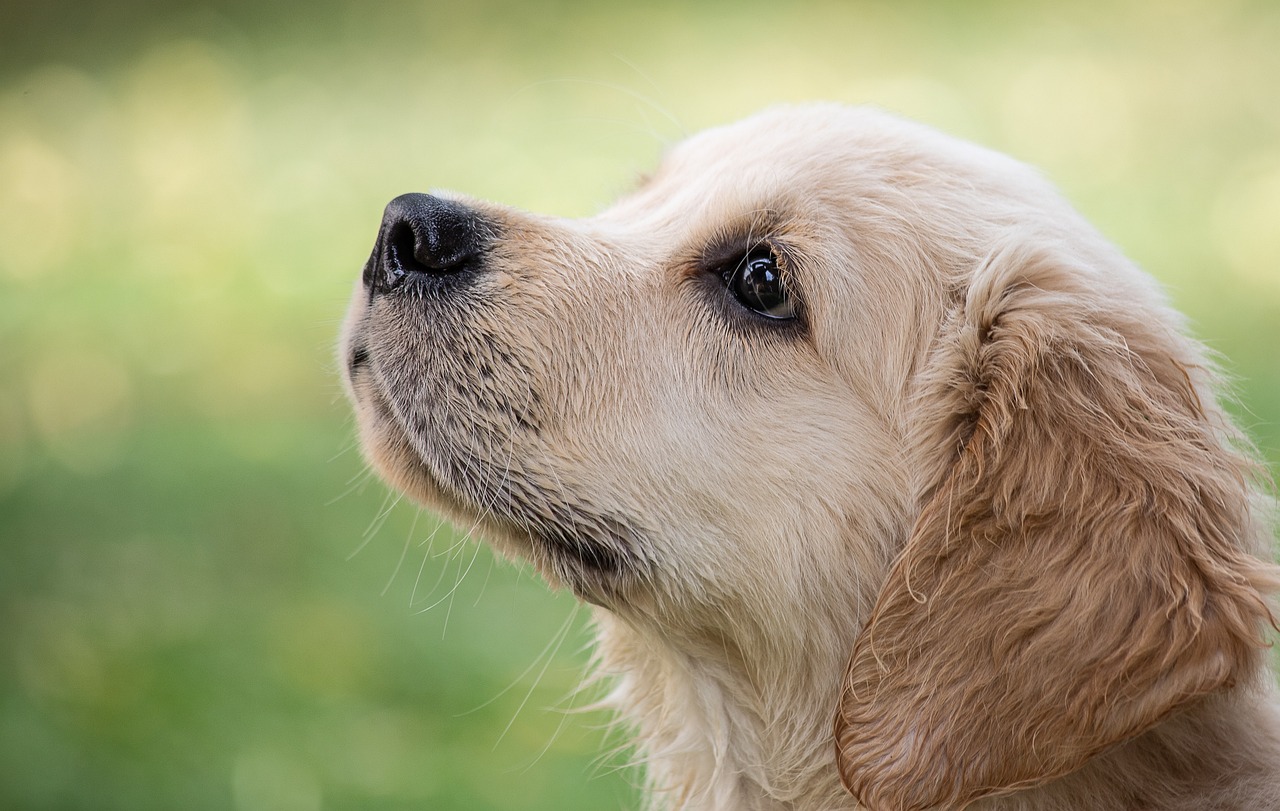
History of the Otterhound
The Otterhound has a fascinating history that dates back to the 13th century in England, where it was originally bred for the purpose of hunting otters. Imagine a time when these dogs played a crucial role in maintaining the balance of local ecosystems by controlling otter populations, which were known to prey on fish in rivers and streams. The Otterhound was developed from various breeds, including the Bloodhound and other hound types, to create a dog that was not only adept at tracking scents but also had the stamina and strength to pursue its quarry through water and dense underbrush.
As hunting became a popular pastime among the nobility, the Otterhound gained a reputation for its remarkable abilities. Its keen sense of smell and strong swimming capabilities made it an invaluable companion for hunters. In fact, these dogs were so highly regarded that they were often featured in hunting literature and paintings of the time. During the 18th and 19th centuries, the Otterhound was recognized as a distinct breed, with breed clubs forming to promote its preservation and responsible breeding practices.
However, as the popularity of otter hunting declined in the 20th century, the Otterhound faced the threat of extinction. The breed's numbers dwindled significantly, leading to concerted efforts by dedicated enthusiasts to revive it. Today, the Otterhound is still considered a rare breed, but thanks to these efforts, it has managed to maintain a dedicated following among dog lovers and hunting enthusiasts alike.
Throughout its history, the Otterhound has not only been a skilled hunter but also a beloved family companion. Its friendly disposition and loyalty make it an excellent choice for families who appreciate an active, affectionate dog. As we delve deeper into the unique characteristics of the Otterhound, it becomes clear that its rich history is intertwined with its physical traits and temperament, making it a truly remarkable breed.
In summary, the history of the Otterhound is a tale of resilience and adaptability. From its origins as a hunting dog to its current status as a cherished family pet, this breed embodies the spirit of adventure and companionship. Whether you're a potential owner or simply a dog enthusiast, understanding the Otterhound's history adds depth to your appreciation of this extraordinary breed.
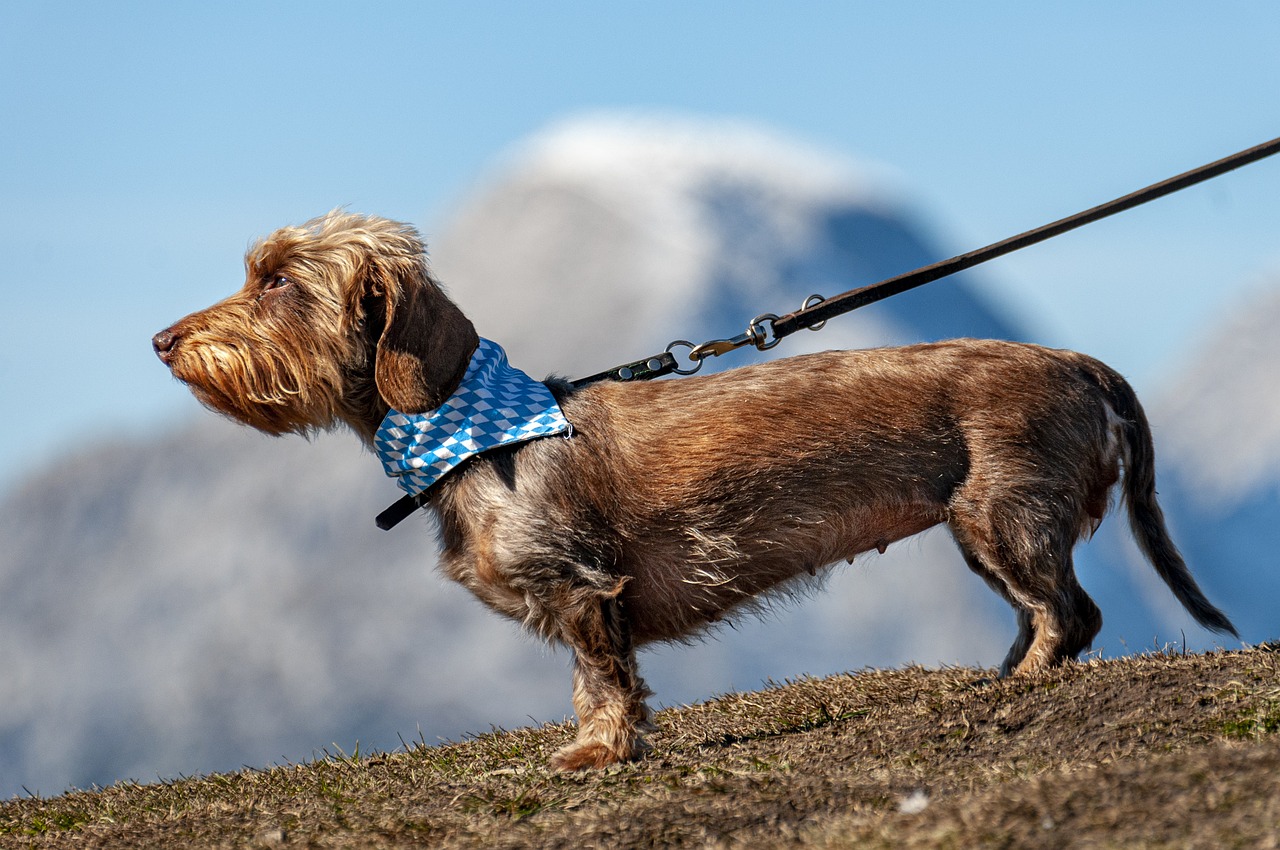
Physical Characteristics
The Otterhound is an extraordinary breed that stands out not just for its unique appearance but also for its remarkable functionality. These dogs are robust, powerful, and designed for life in the water, which is evident in their physical traits. With a size that typically ranges from 65 to 115 pounds, Otterhounds are not just big; they are built for endurance and strength. Their muscular build and sturdy frame reflect their history as skilled hunters, capable of pursuing otters through challenging terrains and aquatic environments.
One of the most striking features of the Otterhound is its water-resistant coat. This distinctive coat is not only a visual hallmark but also serves a crucial purpose. The texture is dense and rough, providing insulation and protection against the cold, wet conditions often encountered during hunts. The colors of their coat can vary, typically showcasing shades of grizzle and tan, black and tan, or brown, which allows them to blend into their natural surroundings while hunting. The coat requires regular grooming to maintain its health and effectiveness, making it essential for owners to be prepared for a grooming routine.
When it comes to size, the Otterhound is undeniably a large breed. Their height usually falls between 24 to 27 inches at the shoulder, which gives them a commanding presence. This size not only contributes to their strength but also plays a vital role in their ability to navigate through water and thick brush. The breed's build is robust, with a deep chest that allows for ample lung capacity, essential for stamina during long periods of activity. Their strong legs and large paws provide stability and agility, enabling them to traverse various terrains with ease.
The Otterhound's coat is one of its most fascinating features. Composed of a coarse outer layer and a softer undercoat, it is designed to repel water, keeping the dog dry and warm even when submerged. This unique combination of textures not only protects the dog from the elements but also helps in reducing drag while swimming. The breed's coat colors can range widely, but the most common are:
- Grizzle and Tan
- Black and Tan
- Brown
These colors serve a dual purpose: they provide camouflage in the wild and add to the breed's overall appeal. Regular grooming is essential to prevent matting and to keep the coat in top condition.
Perhaps one of the most distinctive physical traits of the Otterhound is its webbed feet. These specially adapted paws are a significant advantage for a breed that was developed for water hunting. The webbing between their toes allows them to swim with remarkable efficiency, making them exceptional swimmers. This feature not only aids in their hunting capabilities but also ensures that they can navigate through water with ease. The webbed feet, combined with their strong legs, enable the Otterhound to paddle through rivers and lakes, chasing after their quarry without tiring quickly.
In summary, the physical characteristics of the Otterhound are a perfect blend of functionality and uniqueness. From their robust size and water-resistant coat to their webbed feet designed for swimming, every aspect of the Otterhound's physique is tailored to enhance its hunting prowess. This breed is not just a pretty face; it's a living testament to the art of canine evolution, embodying the traits necessary for survival and success in the wild.
Q: Are Otterhounds good family pets?
A: Yes, Otterhounds are known for their friendly and social nature, making them excellent companions for families.
Q: How much exercise do Otterhounds need?
A: Otterhounds require regular exercise, ideally at least an hour a day, to keep them physically and mentally stimulated.
Q: Do Otterhounds shed a lot?
A: While they do shed, regular grooming can help manage their coat and reduce shedding significantly.
Q: What is the lifespan of an Otterhound?
A: On average, Otterhounds live between 10 to 12 years, depending on their health and care.
Size and Build
The Otterhound is a **robust** and **muscular** breed, typically weighing between **65 to 115 pounds**. This significant weight range can be attributed to the dog's **gender**, **age**, and **overall health**. Males generally tend to be larger than females, showcasing a broad chest and strong limbs that provide the strength necessary for hunting and swimming. Their **height** usually ranges from **24 to 27 inches** at the shoulder, giving them a commanding presence. This size is not just for show; it plays a crucial role in their ability to navigate through various terrains, whether it be dense underbrush or waterlogged areas.
One of the most striking aspects of the Otterhound's build is its **powerful legs**. These dogs are built for endurance, which is essential when they are out in the field chasing otters. Their **strong hindquarters** allow them to push off powerfully when swimming, while their **forelimbs** provide stability and agility on land. The overall build of an Otterhound is reminiscent of a **well-trained athlete**, designed to excel in both land and water activities.
In terms of body structure, Otterhounds have a **slightly elongated body** that helps them maintain balance and agility. This unique shape allows them to maneuver effortlessly through water and dense foliage, making them exceptional hunting companions. The breed's **broad head** and **long muzzle** are also noteworthy, as they not only contribute to their distinctive appearance but also enhance their sense of smell, which is vital for tracking.
To better understand the size and build of an Otterhound, here’s a quick comparison of the breed’s dimensions:
| Feature | Males | Females |
|---|---|---|
| Weight | 90 - 115 lbs | 65 - 85 lbs |
| Height | 25 - 27 inches | 24 - 26 inches |
Overall, the size and build of the Otterhound not only contribute to its **aesthetic appeal** but also serve a functional purpose, making it a highly capable breed for its original role as a hunting dog. Understanding these physical traits is essential for potential owners who wish to provide the right environment and care for this magnificent breed.
Coat and Color
The Otterhound's coat is one of its most striking features, serving both aesthetic and practical purposes. This breed is adorned with a water-resistant double coat that not only looks good but also protects it from the elements while hunting in aquatic environments. The outer layer is typically coarse and wiry, while the undercoat is softer and denser, providing insulation against cold water. This unique combination allows the Otterhound to thrive in wet conditions, making it an exceptional swimmer.
When it comes to color, Otterhounds come in a variety of shades, which adds to their visual appeal. Common colors include:
- Grizzle and Tan: A mix of gray and tan, often with distinctive markings.
- Black and Tan: A classic combination that is both striking and elegant.
- Liver and Tan: A rich, warm color that stands out beautifully.
- Wheaten: A lighter, golden hue that gives a soft appearance.
Each Otterhound is unique, and their coat patterns can vary widely. Some may have patches or spots that add to their individuality, while others may have a more uniform appearance. Regardless of color, the coat requires regular grooming to maintain its health and functionality. Brushing helps to remove dead hair and prevents matting, while also allowing owners to check for any skin issues that may arise.
In summary, the Otterhound's coat not only serves as a protective barrier against the water but also showcases the breed's unique personality through its varied colors and patterns. The combination of functionality and beauty makes the Otterhound a truly remarkable breed, both in the field and as a beloved companion.
Here are some common questions about the Otterhound's coat and color:
- How often should I groom my Otterhound? Regular grooming is essential, ideally every few weeks, to keep their coat healthy and free from mats.
- Do Otterhounds shed a lot? Yes, they do shed, especially during seasonal changes. Regular brushing can help manage this.
- Can Otterhounds have different coat colors? Absolutely! They can come in a variety of colors and patterns, each adding to their charm.
- Is the Otterhound's coat hypoallergenic? No, Otterhounds are not considered hypoallergenic, so they may not be suitable for allergy sufferers.
Webbed Feet
The Otterhound's webbed feet are not just a quirky feature; they are a remarkable adaptation that enhances the breed's capabilities as a hunting dog. These webbed structures act like natural paddles, allowing the Otterhound to navigate through water with ease and agility. Imagine trying to swim with your hands tied; it would be quite a challenge! However, for the Otterhound, those webbed feet provide the necessary propulsion to chase after otters and other aquatic prey.
When you observe an Otterhound in action, you can truly appreciate the efficiency of their swimming style. Their feet, designed for both swimming and stability, allow them to move swiftly through water while maintaining balance on land. This unique feature is crucial for a breed that was historically bred to hunt in rivers and lakes. In fact, the webbing between their toes can extend up to a few inches, significantly increasing their surface area while swimming.
Moreover, the webbed feet also contribute to their overall physical strength. They help distribute the dog's weight evenly, making it easier for them to traverse various terrains, whether it’s muddy riverbanks or rocky shores. This versatility is essential for a hunting dog, as they often encounter different environments during their pursuits. To illustrate, here’s a quick comparison of the Otterhound's feet with those of other breeds:
| Breed | Webbed Feet | Primary Function |
|---|---|---|
| Otterhound | Yes | Swimming and stability |
| Labrador Retriever | Yes | Swimming and retrieving |
| Beagle | No | Tracking on land |
| German Shepherd | No | All-purpose working |
In conclusion, the webbed feet of the Otterhound are a vital characteristic that not only enhances their swimming ability but also contributes to their overall functionality as a hunting breed. If you're considering adding an Otterhound to your family, understanding this unique trait will help you appreciate the incredible adaptations that make them such skilled swimmers and hunters.
- Are Otterhounds good with children? Yes, they are known for their friendly and social nature, making them great family pets.
- How much exercise do Otterhounds need? Otterhounds require regular exercise, ideally an hour or more daily, to keep them physically and mentally stimulated.
- Do Otterhounds shed a lot? They do shed, but regular grooming can help manage their coat and reduce loose hair around the house.
- Are Otterhounds easy to train? Training can be a challenge due to their independent nature, but with patience and consistency, they can learn effectively.
Temperament and Behavior
The Otterhound is not just another dog; it’s a delightful blend of friendliness and curiosity that makes it a beloved companion for many families. Known for their gentle demeanor, these dogs are often described as affectionate and social, forming strong bonds with their human families. If you’re looking for a breed that’s both playful and loving, the Otterhound might just be the perfect fit!
One of the most remarkable traits of the Otterhound is its playful nature. These dogs have a knack for turning any mundane moment into a fun adventure. Whether it’s a game of fetch in the backyard or a playful romp at the dog park, Otterhounds thrive on interaction and enjoy being the center of attention. Their friendly disposition makes them excellent with children, and they often become protective yet gentle guardians of the little ones in the household.
However, it’s important to remember that Otterhounds are also known for their independent streak. This characteristic can sometimes lead to a stubborn attitude, especially when they catch a whiff of something interesting during a walk. Think of them as the free-spirited artists of the dog world—while they enjoy companionship, they also cherish their freedom and will often follow their noses wherever they lead. This means that consistent training and clear boundaries are essential to ensure they remain well-behaved.
Socialization plays a crucial role in shaping an Otterhound’s temperament. Early exposure to various environments, people, and other animals can help them develop into well-rounded adults. When properly socialized, Otterhounds are not just friendly with their family; they also tend to be outgoing and welcoming to strangers. This makes them great family pets, but it also means they might not be the best choice for a guard dog. After all, who would want to bark at a potential friend?
In terms of behavior, Otterhounds are known to be intelligent and curious. They require mental stimulation just as much as they need physical exercise. Engaging them in puzzle toys, scent games, or obedience training can keep their minds sharp and prevent boredom. A bored Otterhound can quickly turn into a mischievous one, so keeping their brain busy is just as important as tiring them out physically.
In summary, the Otterhound is a breed that combines a friendly and social temperament with a hint of independence. Their playful nature, combined with a need for mental and physical stimulation, makes them a rewarding and entertaining addition to any home. If you’re prepared to invest time in training and socialization, you’ll find that an Otterhound can be a loyal and loving companion.
- Are Otterhounds good with children?
Yes, Otterhounds are known for their gentle nature and are usually very good with children, making them excellent family pets. - Do Otterhounds require a lot of exercise?
Absolutely! These dogs are energetic and need regular exercise to keep them happy and healthy. - How often should I groom my Otterhound?
Regular grooming is essential, especially to maintain their unique coat. Aim for grooming sessions at least once a week. - Are Otterhounds easy to train?
They can be a bit stubborn due to their independent nature, so consistent training methods and patience are key.
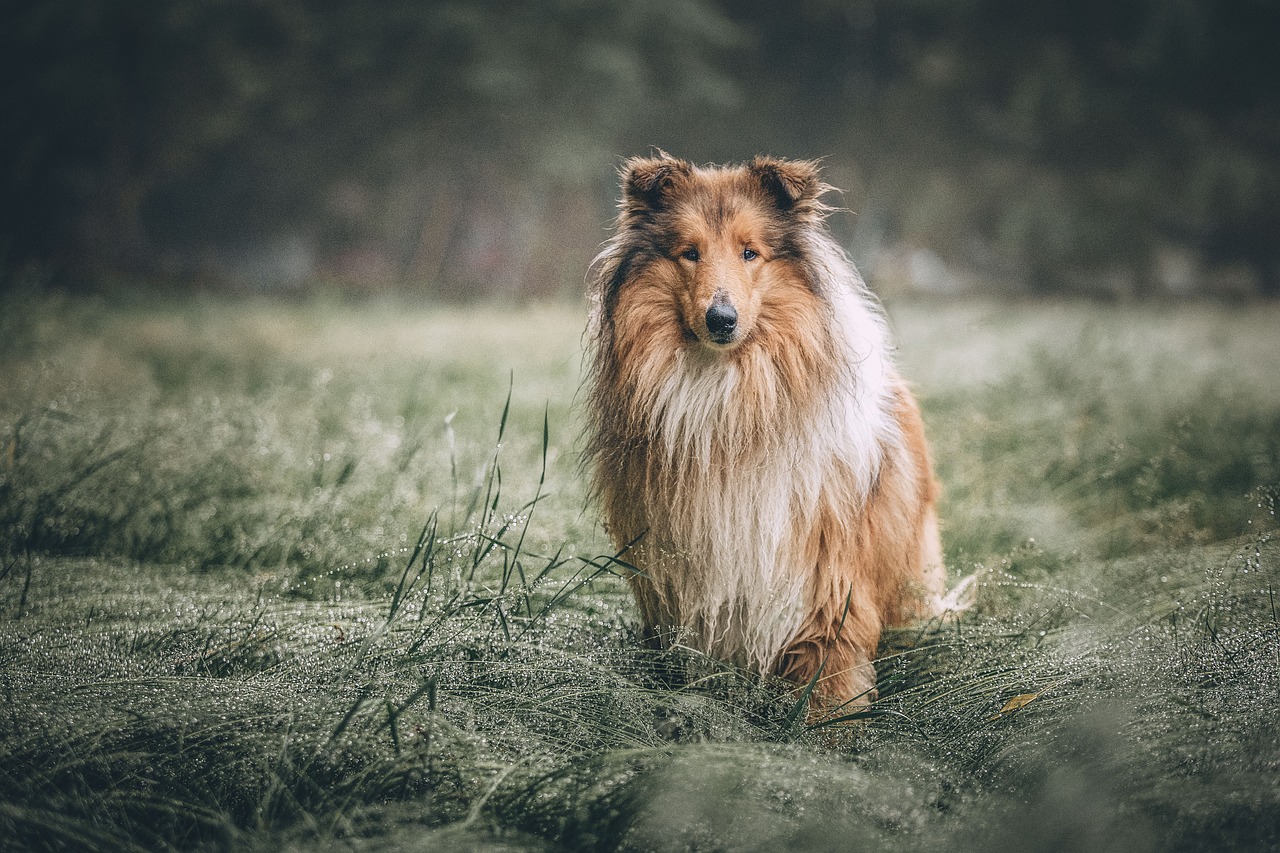
Training and Socialization
The Otterhound, with its friendly demeanor and playful spirit, can be a delightful addition to any family. However, training and socialization are crucial for this breed, as they possess an independent streak that can sometimes challenge even the most patient of owners. Think of training an Otterhound like teaching a teenager to clean their room—sometimes they need a little extra motivation and guidance! Consistency and patience are your best friends in this journey.
First and foremost, establishing a solid foundation of basic commands is essential. Start with simple commands such as sit, stay, and come. These commands not only help with obedience but also strengthen the bond between you and your furry friend. Remember, Otterhounds are intelligent but can be stubborn, so using positive reinforcement methods—like treats and praise—will work wonders. Imagine your Otterhound's excitement when they successfully follow a command and earn a tasty reward!
Socialization is another critical aspect of raising a well-adjusted Otterhound. Exposing your pup to various environments, people, and other animals from a young age can help prevent behavioral issues later on. Aim for a mix of experiences, such as:
- Visits to dog parks
- Playdates with friendly dogs
- Trips to busy public places
- Meeting new people, including children
These interactions will not only help your Otterhound become more adaptable but will also foster their natural curiosity. Just like a child learns about the world through exploration, your Otterhound will thrive on new experiences.
When it comes to training techniques, consider incorporating activities that engage both their body and mind. Otterhounds are energetic dogs that thrive on physical challenges, so why not combine training with fun? Activities like agility training, scent work, or even swimming can be excellent ways to keep your Otterhound stimulated. After all, a tired dog is a well-behaved dog!
Lastly, don’t forget the importance of ongoing training. Just because your Otterhound has mastered the basics doesn’t mean the learning should stop. Regular training sessions keep their minds sharp and can help reinforce good behavior. Think of it as a lifelong journey of discovery for both you and your dog. So grab some treats, put on your training hat, and enjoy the process!
| Question | Answer |
|---|---|
| How long should training sessions last? | Training sessions should ideally last between 5 to 15 minutes, depending on your dog's attention span. |
| What age should I start training my Otterhound? | Start training as early as 8 weeks old to establish good habits and socialization skills. |
| Are Otterhounds easy to train? | They can be independent and stubborn, so patience and consistency are key to successful training. |
| How can I socialize my Otterhound? | Expose them to different environments, people, and other animals regularly to build their confidence. |
Exercise Requirements
Owning an Otterhound is like having a furry companion with boundless energy and enthusiasm. These dogs were bred for a purpose, and that purpose involves a lot of physical activity. If you're considering bringing one of these magnificent creatures into your home, it's crucial to understand their exercise requirements. Otterhounds are not couch potatoes; they thrive on activity and adventure, so prepare yourself for some serious playtime!
On average, an adult Otterhound needs at least 1 to 2 hours of exercise each day. This can include a mix of long walks, vigorous play sessions, and even swimming, which is something they absolutely adore. Their strong, webbed feet and water-resistant coat make them natural swimmers, so if you have access to a lake or a safe swimming area, you’re in for some fun! But remember, while they love to swim, it’s essential to supervise them closely during water activities.
Here are some engaging activities you can incorporate into your Otterhound's routine:
- Long Walks: Aim for at least one long walk daily. They love to sniff around and explore, so let them take the lead sometimes!
- Fetch: A classic game of fetch can keep them entertained for hours. Just be sure to use a durable ball that can withstand their strong jaws.
- Agility Training: Setting up an agility course in your backyard can be a fantastic way to stimulate both their mind and body.
- Swimming: As mentioned, swimming is a favorite activity for Otterhounds. Just make sure the water is safe, and let them splash around!
It's important to note that while Otterhounds are energetic, they also have a laid-back side. After a good exercise session, they enjoy lounging around and relaxing. This balance makes them suitable for families who can provide both activity and downtime. However, if they don't get enough exercise, you might find them engaging in their own version of entertainment, which could include digging or chewing on furniture—definitely not what you want!
In summary, meeting the exercise needs of your Otterhound is not just about keeping them fit; it's about ensuring they’re happy and well-adjusted. A tired Otterhound is a well-behaved Otterhound, so lace up your shoes, grab a leash, and get ready for some adventures together!
Q: How much exercise do Otterhounds need daily?
A: Otterhounds typically require between 1 to 2 hours of exercise each day to stay healthy and happy.
Q: Can Otterhounds swim?
A: Yes! Otterhounds are natural swimmers thanks to their webbed feet and water-resistant coats. They love swimming and should be supervised during water activities.
Q: What activities are best for exercising an Otterhound?
A: Activities like long walks, fetch, swimming, and agility training are excellent for keeping your Otterhound physically and mentally stimulated.
Q: What happens if my Otterhound doesn't get enough exercise?
A: If they don’t get enough exercise, Otterhounds may become bored and engage in destructive behaviors, such as chewing furniture or digging.
Grooming Needs
This article explores the distinctive characteristics of the Otterhound breed, including its history, physical traits, temperament, and care requirements, providing valuable insights for potential owners and dog enthusiasts.
The Otterhound has a rich history as a hunting breed, originally developed in England for otter hunting. This section delves into its origins and the role it played in hunting culture.
Otterhounds are known for their unique physical traits, including their large size, water-resistant coat, and webbed feet. This section highlights these features and their significance in the breed's functionality.
Otterhounds are robust dogs, typically weighing between 65 to 115 pounds. This subsection discusses their size, build, and how these factors contribute to their hunting abilities.
The Otterhound's coat is distinctive and serves a practical purpose. This part examines the coat's texture, colors, and how it protects the dog in aquatic environments.
One of the defining features of the Otterhound is its webbed feet, which enhance swimming capabilities. This section discusses the advantages of this trait for a hunting dog.
The Otterhound is known for its friendly and social nature. This section explores its temperament, behavior, and how these traits make it a suitable family dog.
Training an Otterhound requires patience and consistency due to their independent nature. This section provides tips on effective training methods and the importance of socialization for this breed.
Otterhounds are energetic dogs that require regular exercise. This subsection outlines their exercise needs and suggestions for activities to keep them physically and mentally stimulated.
Maintaining the grooming needs of an Otterhound is crucial for their overall health and appearance. Their distinctive coat, while beautiful, requires a bit of dedication to keep it in top shape. Regular grooming not only helps to prevent matting but also allows you to check for any skin issues or parasites that might be hiding beneath their thick fur. It’s like giving your Otterhound a spa day—who doesn’t love a good pampering session?
The Otterhound's coat is coarse and water-resistant, which is perfect for their historical role as a hunting dog in wet environments. To keep this coat healthy, you should aim to brush your Otterhound at least once a week, or more frequently during shedding seasons. A good quality slicker brush and a comb can work wonders in removing loose hair and preventing tangles. Just imagine how satisfying it is to see all that loose fur come out—like cleaning out the lint trap in your dryer, but much cuter!
Bathing should be done sparingly; generally, once every few months is sufficient unless they’ve had a particularly muddy adventure. When you do bathe them, use a mild dog shampoo to avoid stripping their coat of its natural oils. After bathing, make sure to dry them thoroughly, especially if they’ve been swimming, as dampness can lead to skin irritations.
Moreover, don’t forget about their ears! Otterhounds have floppy ears that can trap moisture and dirt, so it’s important to check and clean them regularly. You can use a soft, damp cloth to wipe the outer ear and a vet-recommended ear cleaner for the inner part. This is crucial to prevent infections, which can be as uncomfortable for them as a bad hair day is for us!
| Grooming Task | Frequency | Recommended Tools |
|---|---|---|
| Brushing | Weekly | Slicker brush, comb |
| Bathing | Every 2-3 months | Mild dog shampoo |
| Ear Cleaning | Weekly | Soft cloth, ear cleaner |
In conclusion, grooming your Otterhound is not just about aesthetics; it’s a vital part of their health care routine. By investing time in grooming, you’re not only keeping your furry friend looking sharp but also ensuring they feel their best. After all, a well-groomed Otterhound is a happy Otterhound!
- How often should I groom my Otterhound? - It is recommended to brush them at least once a week and bathe them every 2-3 months.
- Are Otterhounds hypoallergenic? - No, Otterhounds are not considered hypoallergenic as they do shed fur.
- What are the best tools for grooming an Otterhound? - A slicker brush, a comb, and a mild dog shampoo are essential for grooming.
- Do Otterhounds need special grooming for their ears? - Yes, regular cleaning is important to prevent infections due to their floppy ears.
Frequently Asked Questions
- What is the history of the Otterhound?
The Otterhound has a fascinating history, originating in England where it was bred specifically for hunting otters. This breed played a significant role in the hunting culture of the time, showcasing its exceptional tracking and swimming abilities. If you're a history buff, you'll appreciate how this breed reflects the traditions of its era!
- What are the physical characteristics of an Otterhound?
Otterhounds are known for their robust build, typically weighing between 65 to 115 pounds. They have a unique water-resistant coat, which is essential for their hunting role, and their webbed feet enhance their swimming capabilities. These features not only make them striking in appearance but also highly functional as hunting dogs!
- How is the temperament of the Otterhound?
Otterhounds are friendly and social dogs, making them great companions for families. Their affectionate nature and playful demeanor mean they thrive on interaction and love being part of family activities. If you’re looking for a loyal and loving pet, the Otterhound might just be your perfect match!
- What are the exercise requirements for an Otterhound?
These energetic dogs require regular exercise to keep them happy and healthy. Daily walks, playtime, and swimming are excellent activities for Otterhounds. Keeping them physically and mentally stimulated is key to their well-being, so be prepared for some fun adventures!
- How should I groom my Otterhound?
Grooming is essential for maintaining the Otterhound's unique coat. Regular brushing helps to prevent matting and keeps their fur healthy. It's also important to check their ears and nails regularly. With the right grooming routine, your Otterhound will look and feel fantastic!
- Are Otterhounds easy to train?
Training an Otterhound can be a bit of a challenge due to their independent nature. However, with patience and consistency, you can successfully train them. Positive reinforcement techniques work best, and early socialization is crucial to help them develop into well-rounded pets.




